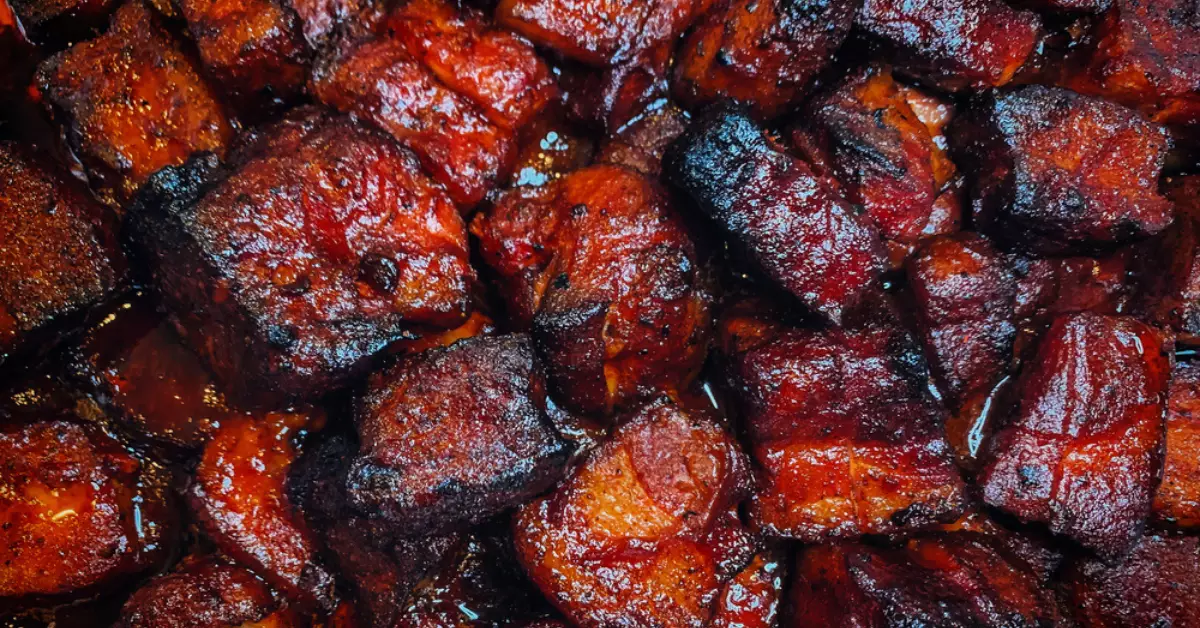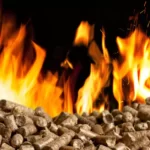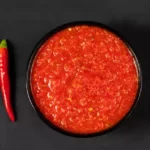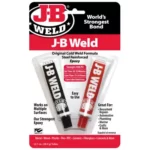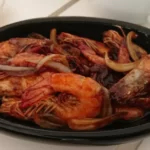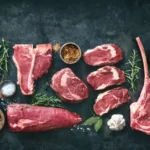For BBQ enthusiasts and food lovers alike, burnt ends are an unmissable treat. These flavorful morsels, originally a humble byproduct of the smoking process, have morphed into a highly sought-after barbecue delight. Born in the heartland of American barbecue culture, burnt ends now enjoy worldwide fame.
Burnt ends are essentially small, cubed pieces of meat, traditionally from the point half of a smoked brisket. These tasty nuggets, double-smoked and slathered in sweet barbecue sauce, are renowned for their unique texture and rich, smoky flavor. Over time, they can even be made from different types of meat or plant-based alternatives, embracing a wider range of palates and dietary preferences.
While burnt ends are typically enjoyed fresh off the smoker, they can be equally mouth-watering the next day. This option not only caters to those running on a tight schedule but also enhances the overall flavor and texture of the meat, creating an elevated barbecue experience.
Burnt Ends: A Brief History and Popularity
Born out of necessity, burnt ends have become a symbol of barbecue innovation and culinary creativity. They originated in Kansas City, Missouri, where pitmasters started selling these extra smoked pieces that were too charred to be included in a brisket sandwich. Soon, their distinctive taste and texture won them a dedicated following, transforming them from a cheap side dish into a delicacy in their own right.
What are Burnt Ends Made Of?
Traditional Ingredients for Burnt Ends
Traditionally, burnt ends are made from the point half of a brisket, a fatty section of beef that becomes incredibly tender and flavorful when slow-smoked over a long period. After the initial smoking, the meat is cubed, slathered in barbecue sauce, and returned to the smoker to achieve a caramelized exterior and a melt-in-your-mouth interior.
Vegetarian and Vegan Alternatives
In recent years, pitmasters have been experimenting with plant-based alternatives, creating vegetarian and vegan burnt ends. Jackfruit and tofu are popular choices due to their ability to absorb flavors and mimic the texture of meat.
The Art of Making Burnt Ends
Proper Selection of Meat
Choosing the right cut of meat is paramount in making burnt ends. A well-marbled brisket point is ideal due to its high-fat content, which renders down during the smoking process, yielding juicy, flavorful burnt ends.
Importance of Marination and Rubs
Marination and rubs are instrumental in imparting flavor to the meat. A combination of spices, herbs, sugar, and salt is used to create a savory rub that enhances the taste and helps form the desirable bark, the dark, crusty exterior of smoked meat.
The Smoking Process
The key to achieving perfect burnt ends lies in low and slow smoking. The meat is smoked at a low temperature for several hours, allowing the fat to render and the smoke to penetrate the meat, resulting in a tender and smoky delicacy.
Creating the Perfect Bark
The final step in making burnt ends involves cubing the smoked meat, coating it in barbecue sauce, and returning it to the smoker. This process caramelizes the sauce, creating a sweet, sticky exterior that contrasts beautifully with the tender meat inside.
Can You Make Burnt Ends The Next Day?
Definitely! Transforming your smoked meat into burnt ends the next day is not only possible, but it also comes with a bunch of advantages. This method can amplify the smoky, savory taste of the meat, creating a more tantalizing barbecue delicacy. Moreover, it can make the cooking process less strenuous by breaking it into manageable parts. Let’s discuss this further.
Preserving the Smoked Meat
Right after smoking, it’s crucial to quickly cool the meat. This step halts the cooking process and prevents bacteria from proliferating. Refrigeration is a suitable method, providing a safe environment to store your smoked meat overnight. Here are some tips for preserving your smoked meat:
- Let the meat rest until it reaches room temperature, ensuring it cools uniformly.
- Wrap the meat tightly in butcher paper or aluminum foil to retain moisture.
- Store the wrapped meat in the coldest part of your refrigerator, typically the back of the lower shelf.
Reheating Techniques for Juicy Burnt Ends
Reheating smoked meat needs to be done carefully to prevent it from drying out. A gentle and gradual reheating process ensures the meat stays juicy and tender. Here’s how you can do it:
- Preheat your smoker or oven to a low temperature, around 225°F (107°C).
- Place the smoked meat in a shallow baking dish, adding a splash of apple juice or broth for added moisture.
- Cover the dish tightly with foil and heat until the meat’s internal temperature reaches 165°F (74°C).
Factors Affecting Quality and Taste
There are various factors that can influence the quality and taste of next-day burnt ends:
- Quality of Meat: Start with a well-marbled brisket point for the best results. High-quality meat yields high-quality burnt ends.
- Smoking Technique: The initial smoking process should be done low and slow. This allows the flavors to penetrate deeply into the meat.
- Storage Conditions: Ensure the meat is cooled rapidly and stored properly to maintain its safety and taste.
- Reheating Method: Reheat gently at a low temperature to prevent the meat from drying out.
Benefits of Making Burnt Ends The Next Day
Creating your burnt ends the next day comes with several advantages:
Enhanced Flavors and Textures
Overnight resting allows the flavors to mature and meld together, creating a more flavorful end product. The texture of the meat also improves, becoming more tender and juicy.
Time Management and Cooking Convenience
By splitting the smoking and cubing processes into two days, you can manage your time more efficiently. This is particularly handy if you’re hosting a BBQ party and have other dishes to prepare.
Food Safety Considerations
Safe food handling is vital in any cooking process. By cooling and storing the smoked meat properly, you can ensure your next-day burnt ends are not just delicious, but also safe to eat.
Potential Downsides and How to Mitigate Them
Like any other cooking method, making burnt ends the next day may present a few challenges:
Risk of Drying Out and Tips to Prevent It
One risk is the meat drying out during reheating. However, you can circumvent this problem by:
- Reheating the meat slowly at a low temperature.
- Adding some liquid (like broth or apple juice) during reheating.
- Wrapping the meat tightly to lock in moisture.
Preserving the Smoke Flavor
Some of the smoke flavor may diminish during refrigeration. To counteract this:
- Make sure to smoke the meat properly in the first place. Using quality hardwoods like hickory or oak can impart a robust smoke flavor that stands up to refrigeration.
- Reheating the meat in the smoker can help reintroduce some of the smoky essence.
Maintaining the Bark’s Texture
The bark’s texture can soften in the fridge. To preserve its texture:
- Wrap the smoked meat in butcher paper instead of plastic wrap. Butcher paper is breathable and helps to preserve the bark’s texture.
- Don’t add any sauce until you’re ready to make the burnt ends. The sauce can soften the bark if added too early.
Serving Suggestions for Next-Day Burnt Ends
Next-day burnt ends can be served as part of a balanced BBQ spread or as a standalone treat. Here are some ideas:
Pairing Ideas for Burnt Ends
The rich, smoky flavor of burnt ends pairs well with a variety of side dishes and drinks. For example:
- Classic BBQ sides like coleslaw, macaroni and cheese, or cornbread.
- Fresh salads or grilled vegetables for a lighter counterpoint.
- Beverages that can stand up to the strong flavors, such as sweet iced tea, robust stout, or even a bold red wine.
Creating a Balanced Barbecue Spread
If you’re hosting a BBQ party, offering a variety of dishes can cater to different tastes:
- Mix and match different types of meat, from brisket to ribs, and of course, your next-day burnt ends.
- Include a variety of sides, balancing rich, hearty dishes with lighter, fresh options.
- Offer a selection of drinks, both alcoholic and non-alcoholic, to complement the food.
Presentation Tips
Presentation can elevate your barbecue experience. Serve your burnt ends on a wooden platter, sprinkled with fresh herbs, and accompanied by vibrant sides to create an appealing visual feast.
Frequently Asked Questions
Can I make burnt ends from other meats?
Yes, while beef brisket is traditional, you can make burnt ends from pork belly, chicken, or even plant-based alternatives like tofu or jackfruit.
How should I store my smoked meat for next-day burnt ends?
After the initial smoking, cool the meat quickly and store it in the refrigerator in butcher paper. This preserves the smoke flavor and keeps the meat safe.
Can next-day burnt ends be frozen?
Yes, if properly wrapped and sealed, next-day burnt ends can be frozen for up to 3 months. Thaw and reheat them slowly to maintain their quality.
Conclusion
The world of barbecue is ripe with opportunities for innovation and creativity. Next-day burnt ends represent an excellent example of this culinary versatility, delivering a depth of flavor and convenience that can elevate any barbecue event.
Taking the time to smoke the meat and then patiently waiting until the next day to craft the burnt ends is a rewarding culinary journey. It’s a testament to the power of slow food and the magic of smoke and spices that turn a simple piece of meat into a mouthwatering delicacy.

